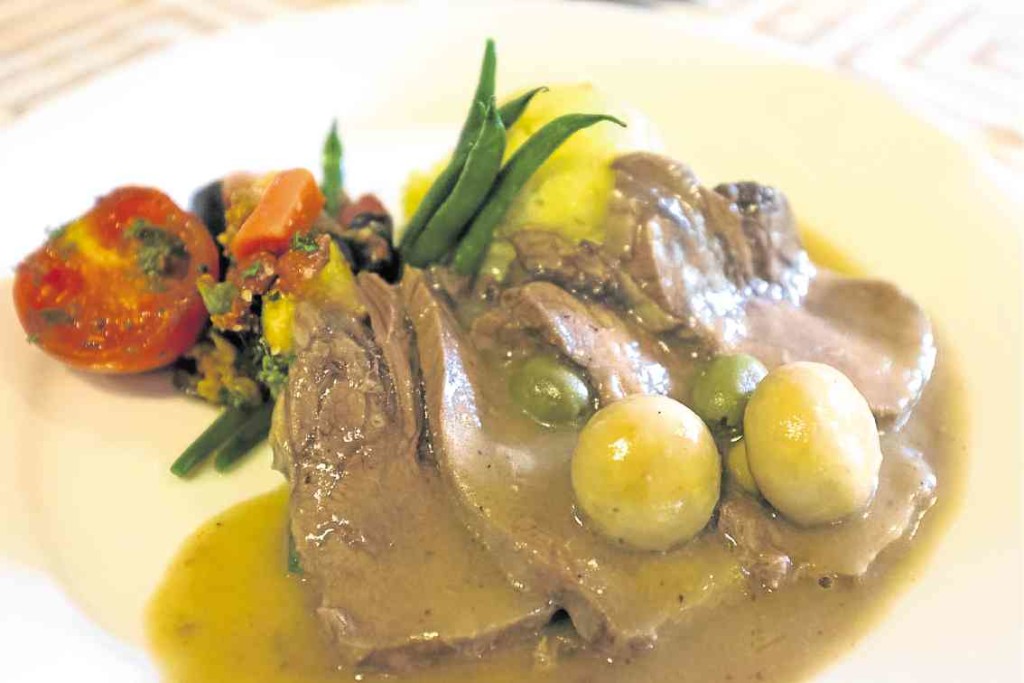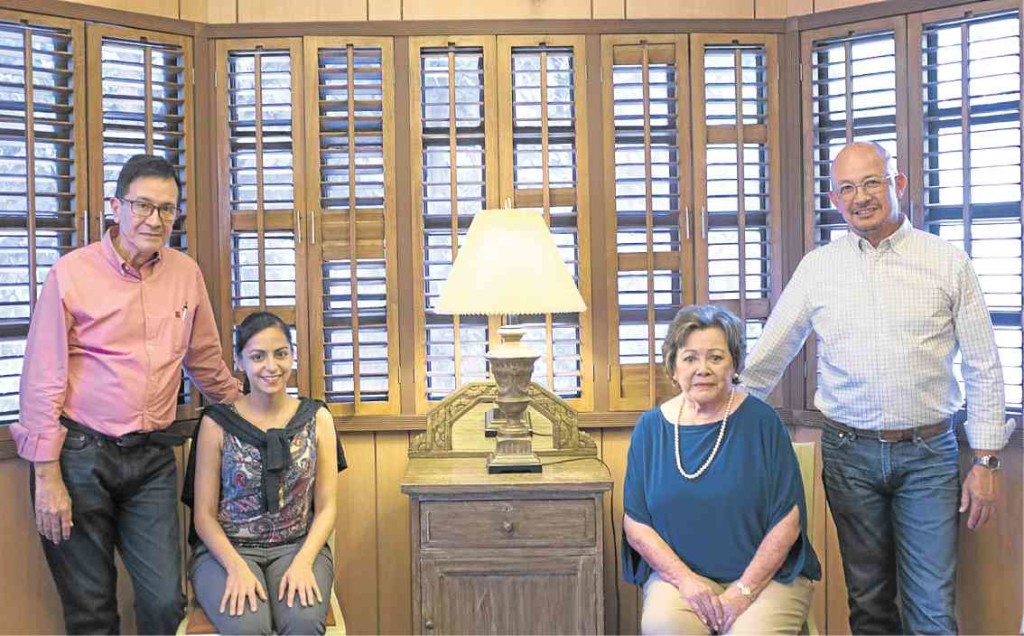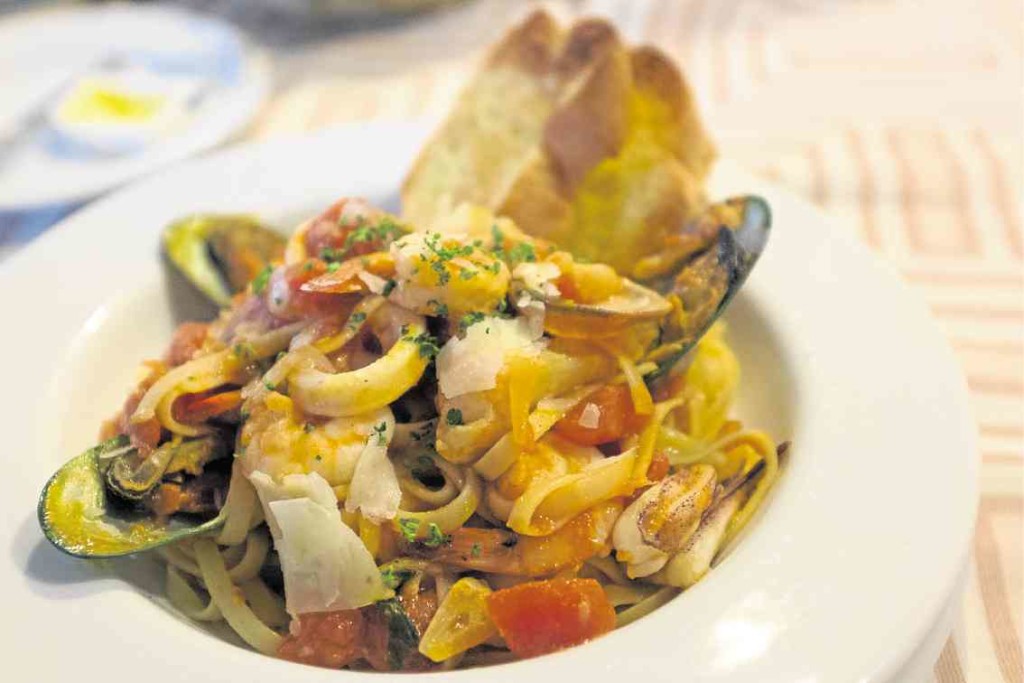Women run the Mario’s world
Mario’s, the Spanish restaurant which first rose to popularity in Baguio City in the 1970s, has undoubtedly become a well-loved brand among generations of Filipino families because of its tasty dishes and impeccable service, both of which have remained consistent throughout the years.
On most days, the reason behind the restaurant’s success can be found bustling about inside their Tomas Morato branch: 83-year-old Nenuca Benitez, the matriarch of the family who continues to run the restaurant.
Her children—and, just recently, her granddaughter—naturally have their own roles in the business, but, like any mother, that doesn’t stop Nenuca from staying on top of things.
“I’m used to getting up, dressing up, putting on makeup … and if I don’t [go to work], well, I’m just not used to that,” she says.
Nenuca and husband Mario put up the restaurant in 1971 in Baguio City where, at the time, they were thinking of finally settling down after living in Guam for five years.
Article continues after this advertisementThe family had moved there because of Mario’s job, which was a bit of a culture shock for Nenuca, she recalls, but also gave her the chance to hone her cooking skills.
Article continues after this advertisement
Nenuca Benitez inherited most of Mario’s Spanish dishes’ recipes from both her mother and mother-in-law.
“I always told my husband, when the priest said, for better or for worse, I know now what it meant. Here, you have maids, nannies. There [in Guam], nothing. Do-it-yourself,” she says. But once I got used to it and I got to have friends, [I realized that] any place is okay. It’s more related to your social life—you can live anywhere. And you know how Filipinos are—they planted patola, upo, pechay. I didn’t have to buy.”
When the family moved back to the Philippines, Nenuca had no qualms about staying in Baguio since she was ready to revive one of her past businesses: A small dress shop.
“Mario’s wasn’t even in my dreams. It was [my husband] who thought of it; he felt there weren’t any restaurants then in Baguio,” she says.
Their initial menu was “labu-labo,” says Nenuca, as it was a mix of Spanish and Filipino recipes she had learned from two strong female influences in her life: Her mother and mother-in-law.
The Quezon City branch has become more popular for its Spanish fare—lengua, callos—while Baguio’s has more Filipino dishes because of the wider assortment of customers.
But when they initially opened in the ‘70s, Nenuca says Mario’s in Baguio didn’t exactly have a crowd—until Martial Law happened.
“All the old rich in Manila who had houses [in Baguio] that were abandoned started fixing them up,” she says, which eventually led to Mario’s becoming well-known among the well-heeled.
“So I guess I have to thank Marcos for that,” she adds, with a wry smile.
Shortly after, the family decided to branch out to Makati City, but that store eventually closed in 1985.
The Tomas Morato branch opened in 1974, one of the first establishments on the popular restaurant row, and has remained a crowd favorite despite the presence of newer, younger eateries.
“We have classics that we don’t touch,” says chef Anton Benitez, one of the sons of the restaurant’s founders.
“And this,” he adds, placing his hands on Mario’s table setting in their Tomas Morato branch, which makes use of tablecloths, not place mats, “is what they’ve gotten used to … so we’re very careful about change.”
Not that the family resists change; in fact, they’ve updated their logo and menu, as well as the restaurant’s interiors. Nenuca says she is also happy that her granddaughter, 31-year-old Elisa, is now working as one of the Tomas Morato branch’s store managers.
Elisa says she is currently working on a marketing strategy to attract more millennials to the restaurant, while ensuring that their regular patrons—the more seasoned crowd—remain “happy with what they’re being served, [and] how they’re being served.”
“Change has to be very subtle because we don’t want to lose our primary market … who are ages 40 and up,” says the former flight attendant. “The shift into that second market, the millennials, has to be done gradually.”
There are also plans to expand their reach by opening more branches, says Fil Benitez, another of Nenuca’s sons, who works on the restaurant’s business development.
He also brings up the idea of bottling some of Mario’s sauces or salad dressings—their Caesar’s Salad, as regulars would know, is the best in town—and selling them off the shelf.
“Yes, I would like that. It’s an idea we’ve always had,” says Nenuca, with an approving nod.
And as it has always been since Mario’s first opened, Nenuca briefly excuses herself from our conversation—and heads straight back to the kitchen to check on the day’s work.

